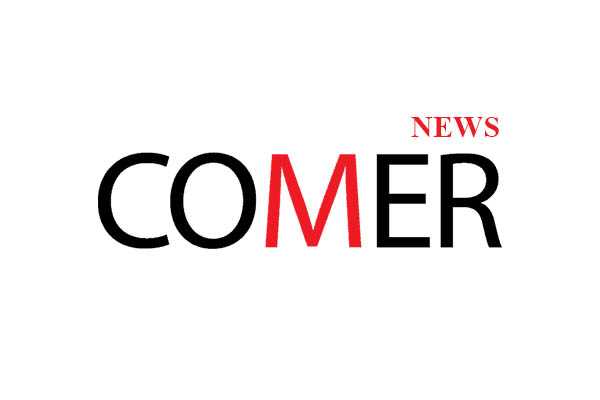In a previous issue we looked at how the balanced budget narrative is misleading because it obscures how the federal budget transfers large quantities of tax dollars to the well-off – loosely defined as the top 10% of income earners. This was accomplished by privatizing the federal debt using tax dollars to pay the interest owed. The budget item is called debt service charges and is the third highest line item in the budget after seniors and health care. It is even higher than defence spending. How do the government and media manufacture our agreement or consent for this? It was never raised as an election issue. We talk about balanced budgets instead. We are shown the forest not the trees.
Regular readers of ER are also likely familiar with the writings of Ellen Brown author of The Web of Debt and The Public Banking Solution. During the recent federal election, Trudeau floated an interesting plank about creating an infrastructure bank. My first response was “You already have one. The Bank of Canada.” My second question was, “Public or private?” Again we see both the colossal ignorance and deliberate obfuscation of money issues in this country by our leadership. It is right in front of us but we cannot see. Our eyes are wide shut.
In a recent article being published in a local Peterborough magazine, Greenzine, I asked “How can so many people know so little about something as important as debts and deficit?” Several years ago at a large political gathering, I presented on “How I Learned Why Bad Beliefs Don’t Die, at the Hockey Arena.” I related how two businessmen, fathers of players on my son’s hockey team, had discussed with me my letters to the editor. I asked them in the course of the discussion, “When you go to the bank and borrow money, where does the bank get the money?” I got the usual answers and then I replied that the banks create the money out of thin air! One of the dads was incensed at the answer and grabbed my shirt as if to punch me with the other hand saying that was the “most stupid thing” he had ever heard! I asked him if I could buy him a coffee or had he had too much. He relaxed and at the next intermission I asked him about his education – a business degree. He had studied macroeconomics; so, at the next game, I presented him a photocopy from his economics book describing the process of bank-created money.
These examples are part of my journey of trying to understand why it is so hard for people to understand the COMER message. John Kenneth Galbraith, arguably one of the greatest economists of the 20th century and a prolific author of many best selling economics books, stated in one of his books, “The process by which banks create money is so simple that the mind is repelled. Where something so important is involved, a deeper mystery seems only decent.”
I think he was onto something about human psychology. As a professional social worker, I have trained a psychological lens on this matter.
Almost 15 years ago I read an article in the Skeptical Inquirer by Dr. Gregory Lester, a social psychologist, entitled Why Bad Beliefs Don’t Die. More recently I viewed a video which you can watch if you Google “Can you ride a bicycle smarter every day.”
The article describes how any belief that we hold, “no matter how trivial,” is part of our “reason for survival.” The implication is that changing a belief is threatening to us and when facts are presented to others who hold a different belief, a state of cognitive dissonance arises leading to feelings of anxiety. That sets up the psychological conditions of freeze, flight or fight. Think about the violent reaction I got from the businessman. Logical discussion and knowledge is not sufficient to alter a belief. The businessman had been told when young to save his money in a bank because it will pay interest earned on that money by lending it out charging interest. We all not only “know” and “believe” this, we “understand” it to be true from an early age.
The video shows how “knowledge” is not the same as “understanding” and discusses how our brain is physically wired into a bias that takes huge effort to rewire or undo. Some of us may find it easier to rewire our brain than others. That is not a matter of intelligence. It is a matter of bias but recent writings by Kahneman in his book Thinking Fast and Slow suggest a related phenomenon may also be at play. He describes System 1 and System 2 thinking. To solve a problem, it is often necessary to shift one’s thinking to System 2 requiring more effort and energy than System 1. System 1 seems to include habits, learned patterns and almost reflexive thinking. He describes a problem that many Harvard grads struggle to solve. If a bat and ball cost $1.10 and the bat alone costs $1 more than the ball. How much is the ball? Out of “reflex” most people will say 10 cents but checking the answer will quickly reveal that this is wrong. Monitor your struggle towards the solution. It is not about intelligence but shifting your thinking. Then notice how easy it feels once you have solved it.
So how does this impact those of us trying to promote using the Bank of Canada as the government’s bank instead of the private sector? Are there other factors at play?
In 1973, the year of the CIA coup against Allende in Chile, the Trilateralists, business leaders from Japan, Europe and the USA met together under the chair of Rockefeller and looked at the world situation. As I recall the summary from their book, it concluded that: there is an excess of democracy and people are too well educated. This was causing expectations to be too high. Given the psychological factors that I have just described, how would that “problem” be solved by those with power?
They likely knew the power of propaganda or public relations. If we examine the writings of Edward L. Bernays, who once stated that the elite have the right to shape public opinion, we find an action plan for altering the expectations of masses of people. A biography of Bernays was written by Larry Tye and is called The Father of Spin.
Here is Bernays’ 8-step plan.
- Define your objectives
- Conduct Research
- Modify your objectives based on that research
- Set a Strategy
- Establish themes, symbols and appeals
- Create an Organization to execute your strategy
- Decide on timing and tactics
- Carry out your plans
One can see that, for the most part, these steps were followed and in some instances refined. The steps do not need to be followed in precise order.
Can we see the evidence around us for this plan being put in place? In many places in the world, so-called research think tanks were formed after 1973, such as the Fraser Institute in Canada (1974). From them flowed “research” and political statements all designed to reduce expectations.
Educators were criticized for not doing their job. While the stated purpose was to improve education, the intent was the opposite. Improvement is defined as increased knowledge not understanding and is designed to keep people thinking at the System 1 level. Other than in a few countries that offer free tuition, the costs of university and college education have soared and students are graduating with huge debts or choosing not to go to university. If you believed that people were too well educated and had expectations that were too high, what strategy would you put in place to finance education if you were able to control the levers of power?
Under a small number of owners, newspapers and other media were accumulated all presenting similar messages. Government was too big, politicians were wasteful spenders and corrupt, civil servants were corrupt, etc. Key to this was an austerity plan. Remember TINA – There Is No Alternative. The belief in the primacy of individual effort and achievement was glorified citing Ayn Rand resurrected by Reagan and Thatcher.
On April 2, 1976, I was at an austerity rally in Toronto called “Stop The Cutbacks.” The provincial government was cutting social programs. The message that we cannot afford education, health care, social assistance for the poor and those living with disabilities, the message was couched in language that depicted them as cheaters and opportunists. That stereotype continues to this day and is world-wide. It was the same year that Milton Friedman won the faux Nobel prize for his economic ideas.
The Bank of Canada stopped lending to the government in the mid ’70s. Prior to that time the Bank of Canada managed inflation partly by requiring that the banks of the country have on deposit with them a certain amount of money. That amount used to be periodically changed by the Bank of Canada as a means of controlling inflation. The amount required would increase if inflation was deemed a concern and decreased when recessions seemed in the offing. They were called reserve deposits and are different from the deposits that banks are required to keep on hand to meet the withdrawal needs of customers. But under Trudeau Sr. the strategy to fight inflation was shifted from requiring banks having bigger reserves on deposit with the BoC to raising interest rates to fight inflation.
When interest rates are increased, businesses reduce their borrowing and usually do not hire new staff or make expansion plans. The economy slows and the theory is that this will force prices downwards because demand for the products and services will decline. It also may have the effect of attracting foreign purchasers of government bonds because they find the higher interest rates attractive. That, in turn, tends to increase the value of our dollar making foreign products less expensive and our own products that we export more costly to purchase by people in other countries. Thus our domestic prices for products we export are possibly going to drop because of reduced demand overseas or in the USA. There are several theories about inflation and the one just described is the demand-pull type caused, it is believed, by wages that are too high. That, in turn, is thought to be caused by a tighter labour market. Therefore, the Bank of Canada and other economists calculated what they thought would be an ideal or optimum rate of unemployment that would trigger interest rate increases to hold inflation in check. That theory was called NAIRU – The Non-Accelerating Inflation Rate Of Unemployment. (By the way it should be noted that COMER challenged the theories of inflation in a book, Price in a Mixed Economy – Our Record of Disaster, by William Krehm. He also wrote several articles that were reviewed very favourably by economists in France.)
A policy of NAIRU was surreptitiously put in place and described by Shawn McCarthy in the Toronto Star in the early ’90s. If you ask, you will be told that the NAIRU theory and policy is no longer in place. However, every week articles appear in the business pages about the risk of inflation. It is a part of the justification for austerity measures where governments are urged to tighten their belts and not expand programs or services. They should not run deficits. A mind-set of austerity has taken hold so that many do not see it and cannot analyze it even when it is directly affecting them. It reminds me of the title of the Tom Cruise movie Eyes Wide Shut!
Efforts by newer and alternative think tanks such as CCPA and COMER were made to counter this agenda of the TriLateralists but lacking the power of ready media access and, perhaps not appreciating the psychological factors, their counter measures have had limited success. When messages – even false ones – are repeated often enough they create a bias – subliminally – that is difficult to change.
If you examine the following economic data from the end of WWII: government debts, deficits, surpluses, revenues and expenditures and compare that data to income and wealth disparity – inequality – and who benefited from the so-called return to prosperity, you will find a disturbing similarity. Wages started to decline at the same time CEOs’ incomes started to increase along with the growth in the country’s debt. The banks started to report record profits each quarter. There is a wonderful interactive graph on the CBC website about each prime minister’s deficits and surpluses from 1963 to 2015 along with their revenues and expenditures.
If you Google “Canada’s deficits and surpluses 1963 to 2015 CBC,” you will see that, like many other studies, it shows a dramatic shift occurring after the early 70s. But none of the CBC commentators or hosts refer to it. If they look at it, they likely freeze or flee. When I show it to people and walk them through it, they open their eyes in astonishment! Some get angry.
The answer to the bat and ball problem will be provided in the next issue along with several ways to solve the problem.





